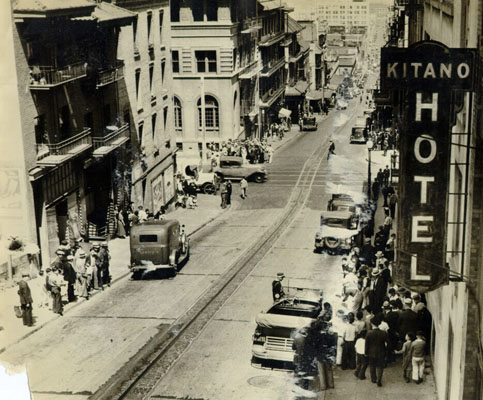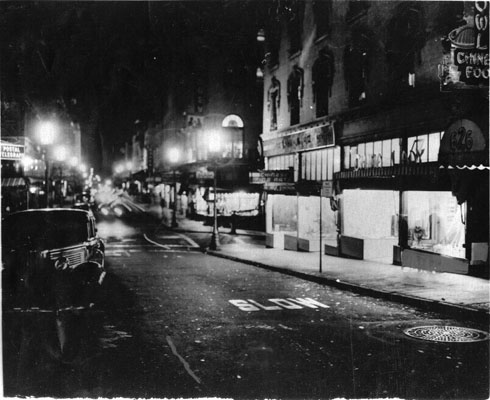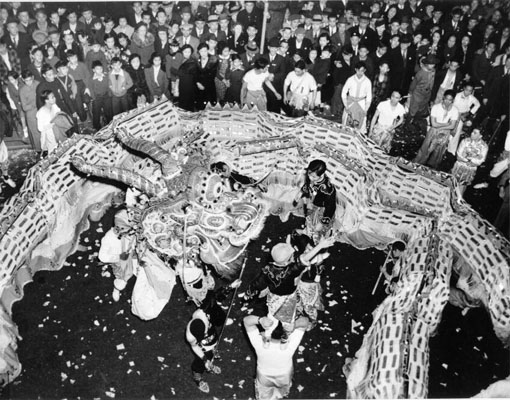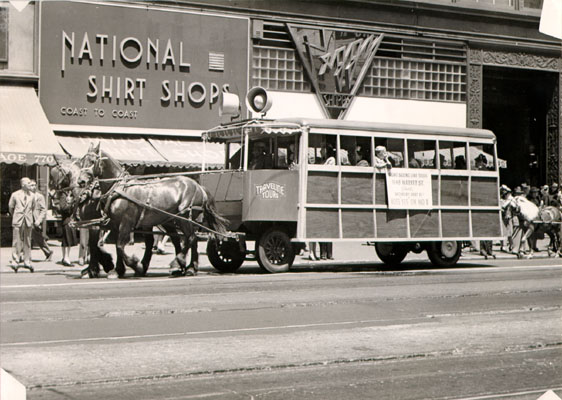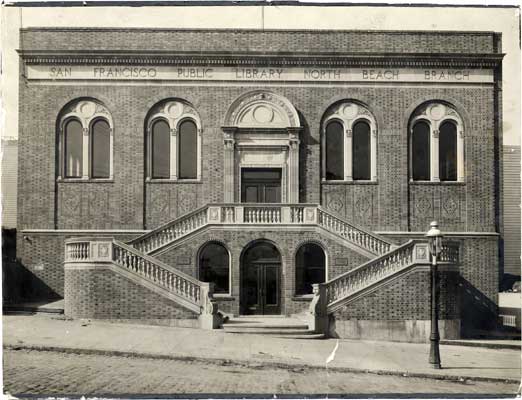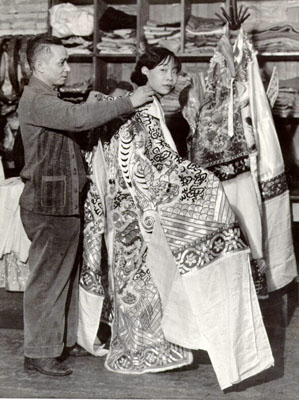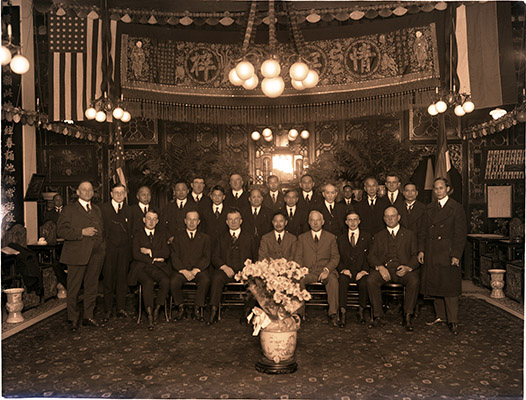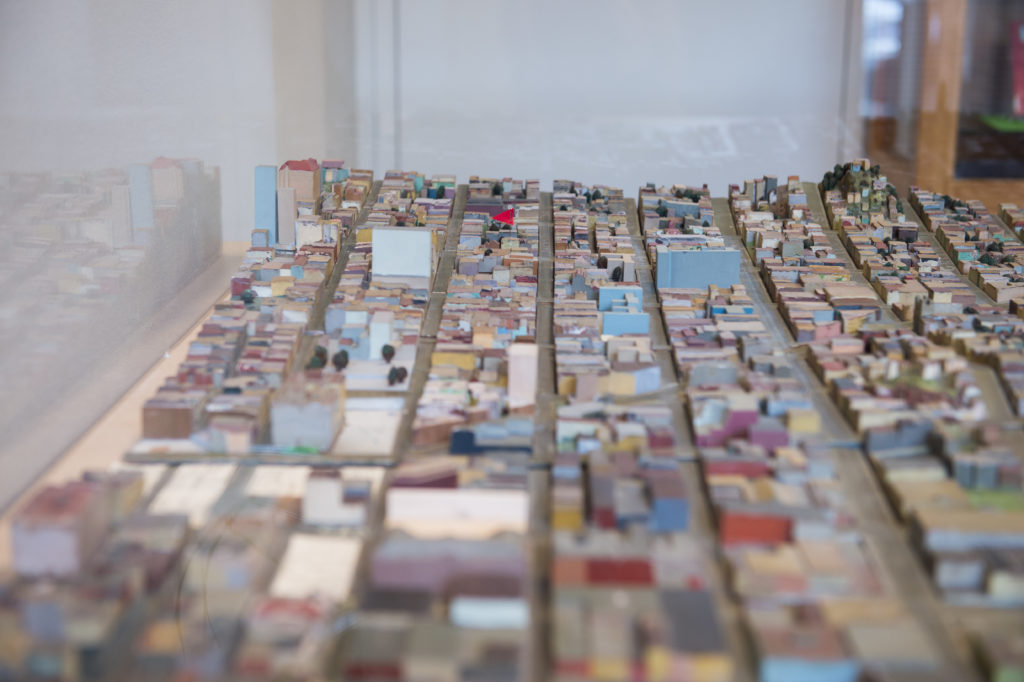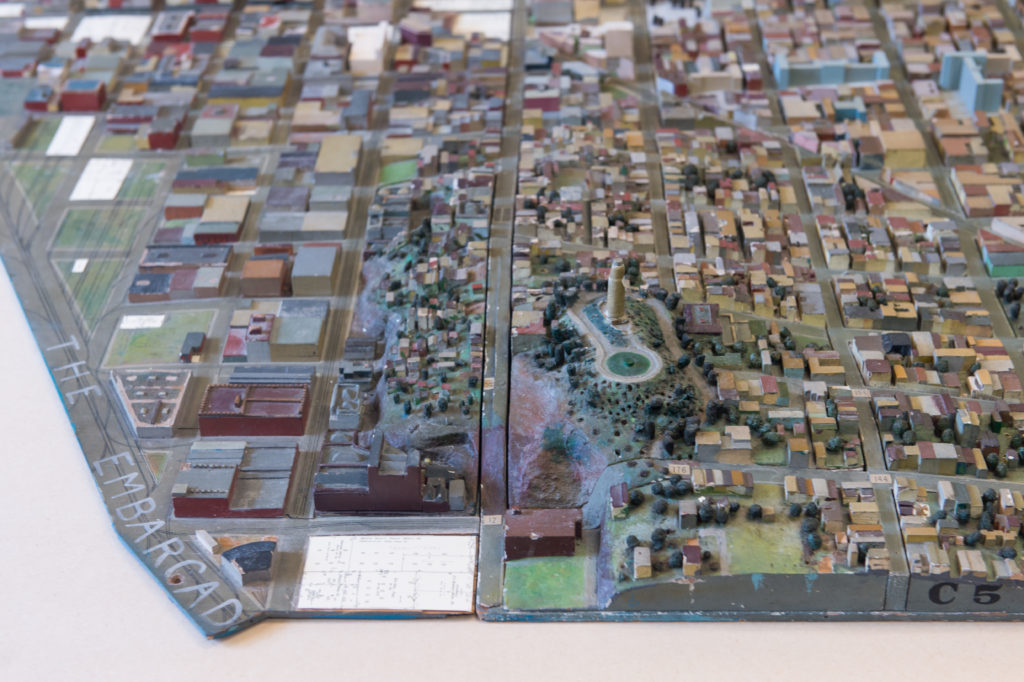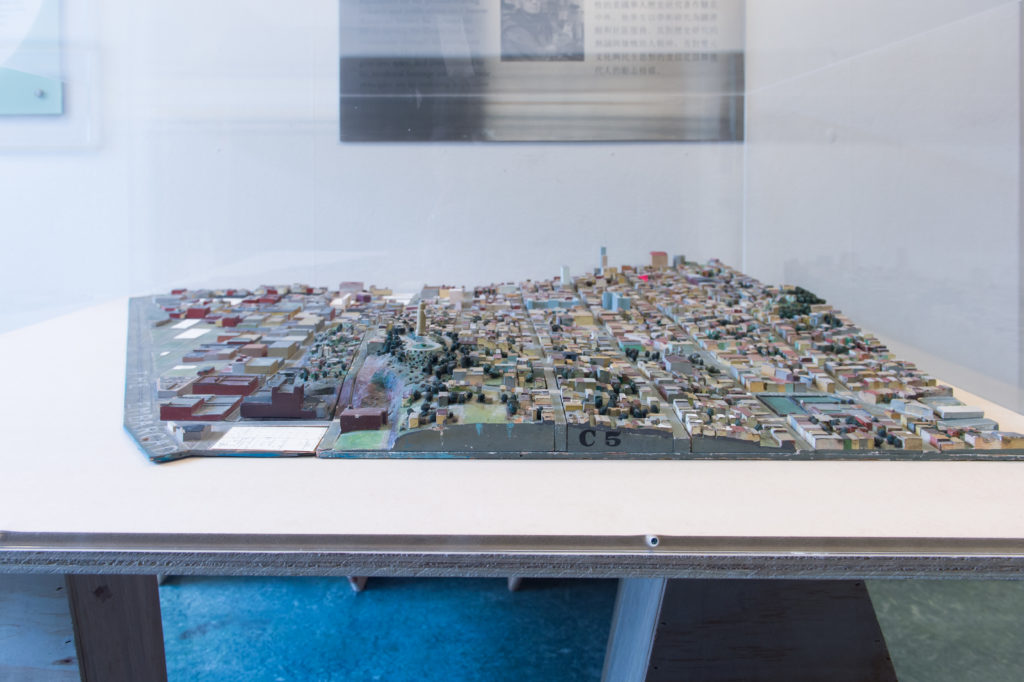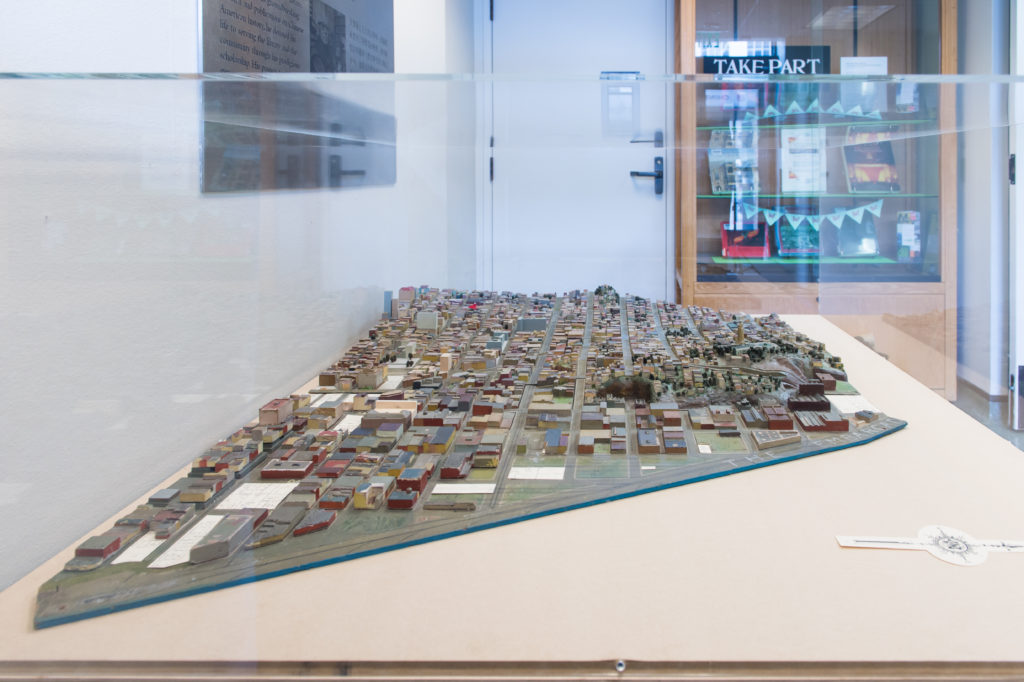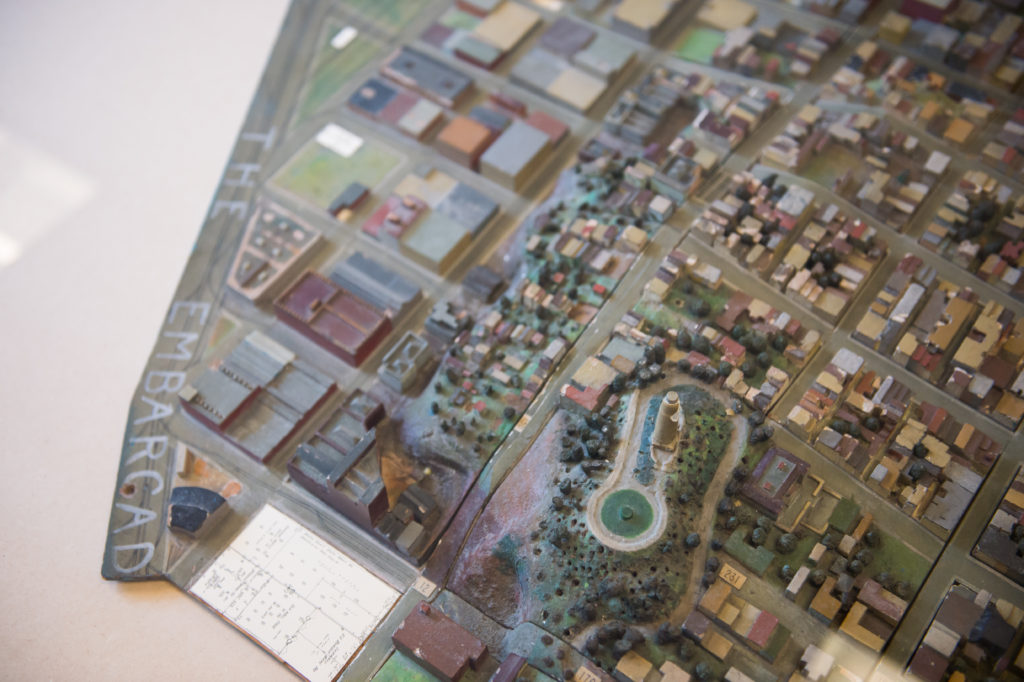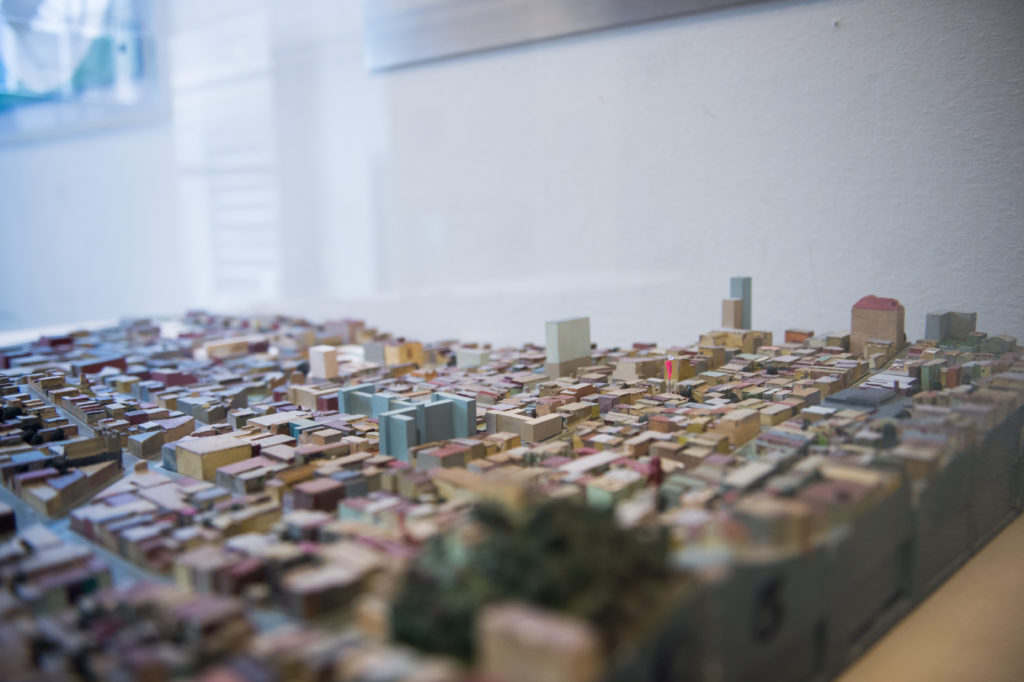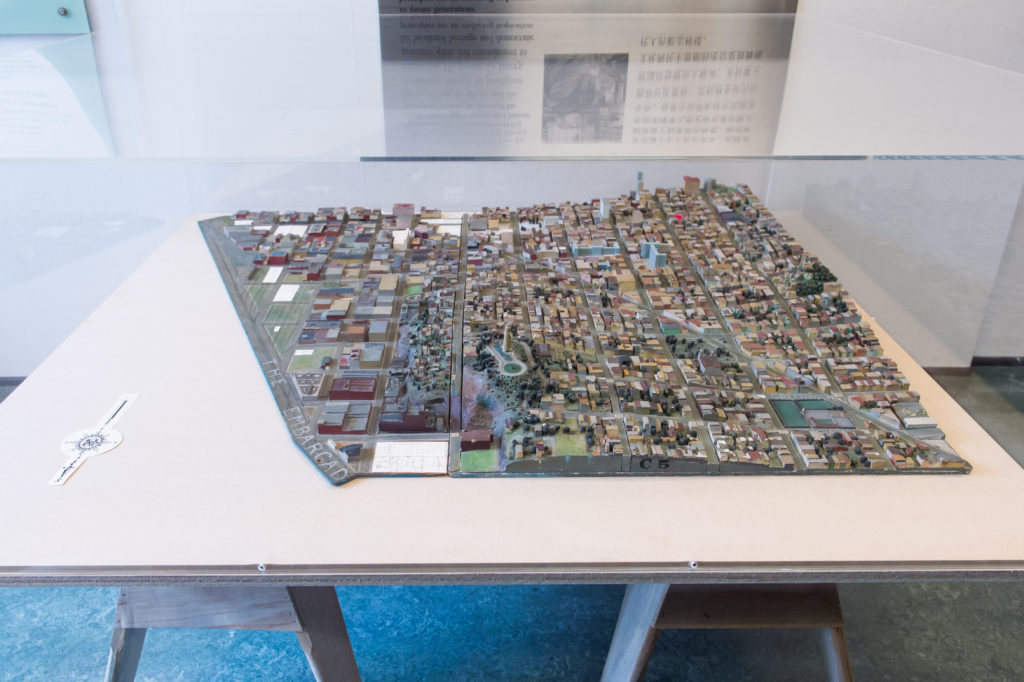1135 Powell St, San Francisco, CA 94108
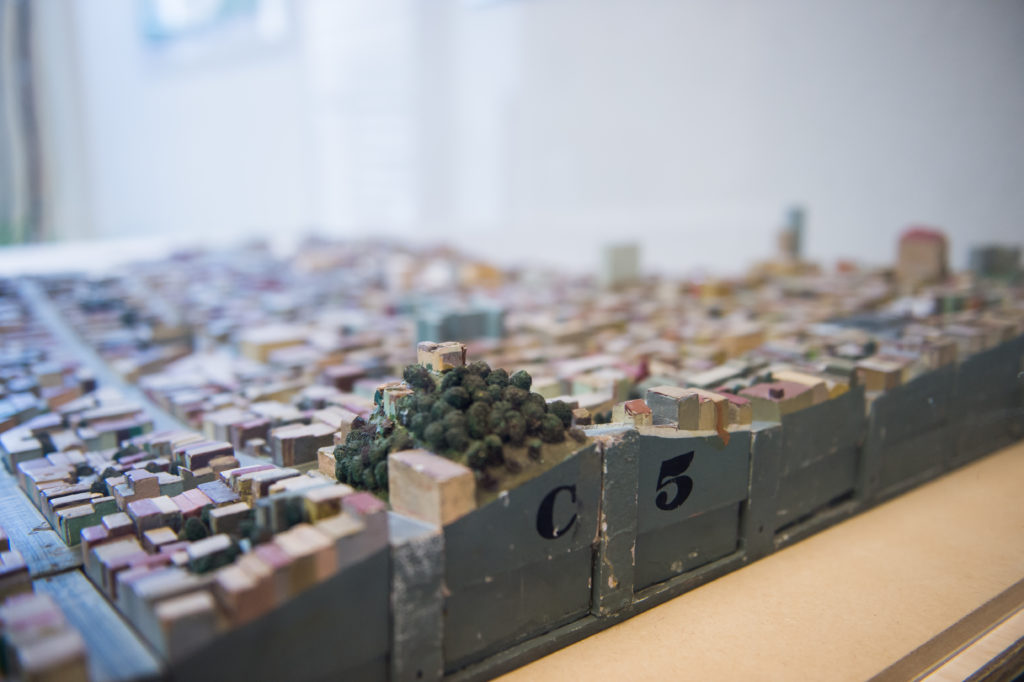
Between the two World Wars, San Francisco had the largest Chinese American population in the country, the overwhelming majority confined to Chinatown. The scale model highlights many of the neighborhood landmarks from that period that remain iconic today: Portsmouth Square, Tianhou Temple, St. Mary’s Cathedral, the Telephone Exchange building and the YWCA, operative since 1911 but housed in the Julia Morgan-designed building since 1930. Today that building serves as the Chinese Historical Society of America Museum and Learning Center.
Not revealed on the model is the resilience of the Chinese American community both before and after this period. By the late 1930s, the Chinese-American community had been living for over half a century with the Chinese Exclusion Act of 1882, which suspended immigration from China into the United States and prohibited naturalization. Tragically, the 1906 earthquake and fire destroyed all of Chinatown, including everyone’s records; but the Chinese returned to the area and rebuilt, and thousands of Chinese men became “paper citizens” by signing certificates stating the United States as their birthplace. By the 1970s, Chinatown had become a place for business and pleasure for tourists and locals alike. Yet discrimination persisted. In 1974, 135 workers from the Jung Sai factory at 656 Washington Street successfully picketed the Esprit de Corps clothing company, leading to a multi-faceted campaign against exploitation and oppression of Chinese immigrants in San Francisco.
Historical Photos
All photos courtesy of the San Francisco History Center, San Francisco Public Library.
Scale Model Installation Photos
All photos courtesy of Beth LaBerge.
Neighborhood Mixtape
Branch Events
February 9th, 2019: Film: Guess Who’s Coming to Dinner?
March 8th, 2019: Build It: Lego City
March 23rd, 2019: Reading the Model at Chinatown
